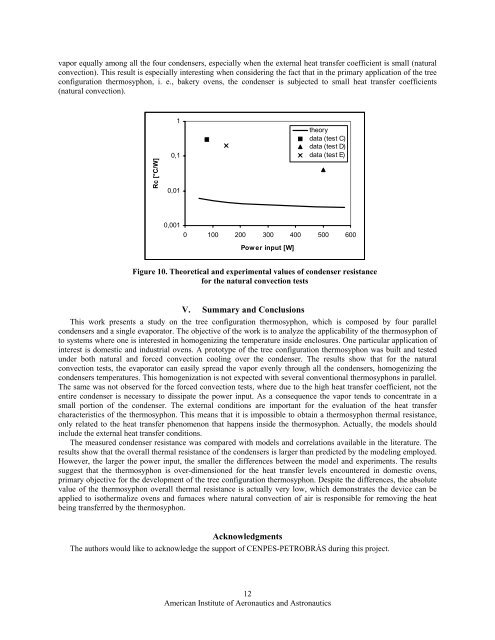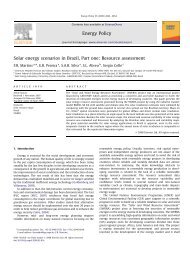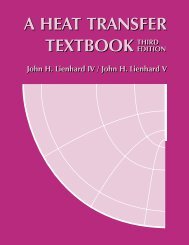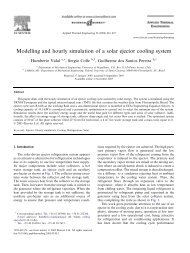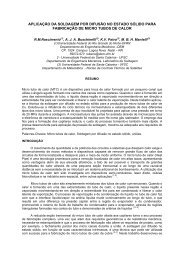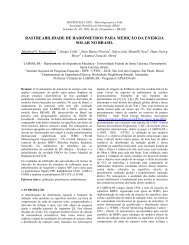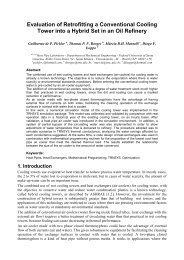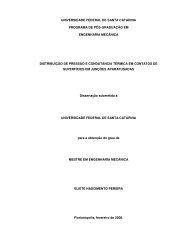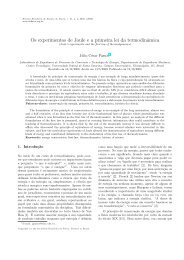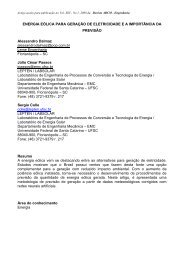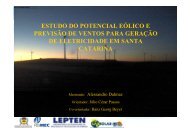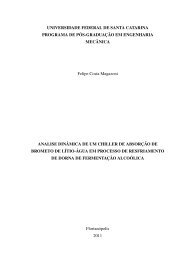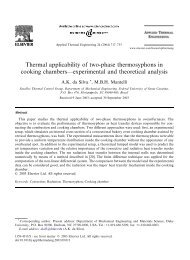Tree Configuration Thermosyphon Study - LEPTEN
Tree Configuration Thermosyphon Study - LEPTEN
Tree Configuration Thermosyphon Study - LEPTEN
Create successful ePaper yourself
Turn your PDF publications into a flip-book with our unique Google optimized e-Paper software.
vapor equally among all the four condensers, especially when the external heat transfer coefficient is small (natural<br />
convection). This result is especially interesting when considering the fact that in the primary application of the tree<br />
configuration thermosyphon, i. e., bakery ovens, the condenser is subjected to small heat transfer coefficients<br />
(natural convection).<br />
Rc [°C/W]<br />
1<br />
0,1<br />
0,01<br />
theory<br />
data (test C)<br />
data (test D)<br />
data (test E)<br />
0,001<br />
0 100 200 300 400 500 600<br />
Power input [W]<br />
Figure 10. Theoretical and experimental values of condenser resistance<br />
for the natural convection tests<br />
V. Summary and Conclusions<br />
This work presents a study on the tree configuration thermosyphon, which is composed by four parallel<br />
condensers and a single evaporator. The objective of the work is to analyze the applicability of the thermosyphon of<br />
to systems where one is interested in homogenizing the temperature inside enclosures. One particular application of<br />
interest is domestic and industrial ovens. A prototype of the tree configuration thermosyphon was built and tested<br />
under both natural and forced convection cooling over the condenser. The results show that for the natural<br />
convection tests, the evaporator can easily spread the vapor evenly through all the condensers, homogenizing the<br />
condensers temperatures. This homogenization is not expected with several conventional thermosyphons in parallel.<br />
The same was not observed for the forced convection tests, where due to the high heat transfer coefficient, not the<br />
entire condenser is necessary to dissipate the power input. As a consequence the vapor tends to concentrate in a<br />
small portion of the condenser. The external conditions are important for the evaluation of the heat transfer<br />
characteristics of the thermosyphon. This means that it is impossible to obtain a thermosyphon thermal resistance,<br />
only related to the heat transfer phenomenon that happens inside the thermosyphon. Actually, the models should<br />
include the external heat transfer conditions.<br />
The measured condenser resistance was compared with models and correlations available in the literature. The<br />
results show that the overall thermal resistance of the condensers is larger than predicted by the modeling employed.<br />
However, the larger the power input, the smaller the differences between the model and experiments. The results<br />
suggest that the thermosyphon is over-dimensioned for the heat transfer levels encountered in domestic ovens,<br />
primary objective for the development of the tree configuration thermosyphon. Despite the differences, the absolute<br />
value of the thermosyphon overall thermal resistance is actually very low, which demonstrates the device can be<br />
applied to isothermalize ovens and furnaces where natural convection of air is responsible for removing the heat<br />
being transferred by the thermosyphon.<br />
Acknowledgments<br />
The authors would like to acknowledge the support of CENPES-PETROBRÁS during this project.<br />
12<br />
American Institute of Aeronautics and Astronautics


